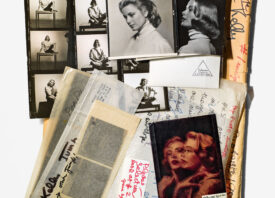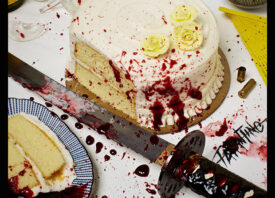Search this site
Remembering September 11th: Photos of What They Left Behind

On the morning of September 11th, 2001, Sgt. John McLoughlin and Officers William Jimeno and Dominick Pezzulo of the Port Authority Police Department (PAPD) brought rescue equipment to aid in the evacuation at the World Trade Center. They saw the South Tower start to collapse above them, and when all fell still, they found themselves buried under thirty feet of rubble.
Officer Pezzulo was killed while trying to rescue the others. Trapped, Sgt. McLoughlin asked Officer Jimeno, then a rookie, to tell him his first name: Will. Officer Jimeno told him he was expecting a daughter; he wanted to name her Olivia. Thirteen hours later, a rescue team from the Emergency Service Unit of the NYPD would free Officer Jimeno. Sgt. McLoughlin was rescued after twenty-two hours, just after the clock struck 7:00 on the morning of September 12th.
The boots Sgt. McLoughlin wore that day are among the 70,000 artifacts now housed at the National September 11 Memorial & Museum in Manhattan. For the September issue of National Geographic, Henry Leutwyler photographed some of the objects from the collection, many of them unseen by the general public until now. To coincide with the publication, more than 30 photographs from the project will be on view at Foley Gallery in New York as part of Sacred Dust: Photographs by Henry Leutwyler.
Among the rescued artifacts photographed by Leutwyler are a broken keyboard, a plastic lid, a sprinkler head, a Rolodex, plane parts, and family photographs. In the National Geographic feature, you’ll find a watch that belonged to Rosemary Smith, who worked at the Sidley Austin Brown & Wood law firm. It’s stopped at just before 1:00.
You’ll also discover a pair of pants worn by an EMT named Greg Gully, who spent four days at Ground Zero, searching for survivors. When he got home, he was unable to wash the dust from his pants, realizing that the ashes were the remains of the people who’d died. And there’s the helmet that was worn by Firefighter Joseph Gerard Hunter of FDNY Squad 288, who was killed while helping to evacuate the South Tower.
Leutwyler was in New York City when the Towers collapsed. To make these pictures, he spent weeks and months with these objects, housed in archives and private collections. Like the artifacts themselves, Leutwyler’s photographs have become memorials in their own right. The prints exhibited at Foley Gallery are not available for purchase.
Instead, they will become part of the permanent collection at the 9/11 Memorial & Museum, where they will join tens of thousands of artifacts, including that worn pair of boots that once belonged to Sgt. John McLoughlin. After he was pulled from the rubble, it was uncertain if Sgt. McLoughlin would ever walk again. But four months later, as the last steel column was removed from Ground Zero, he was walking once more, with Officer Jimeno by his side.
You can see Leutwyler’s prints in person at Foley Gallery through September 25th, 2021. You can find all the images in the September issue of National Geographic magazine and online at NatGeo.com. National Geographic‘s four-night limited series, 9/11: One Day in America is available to view on Hulu.





